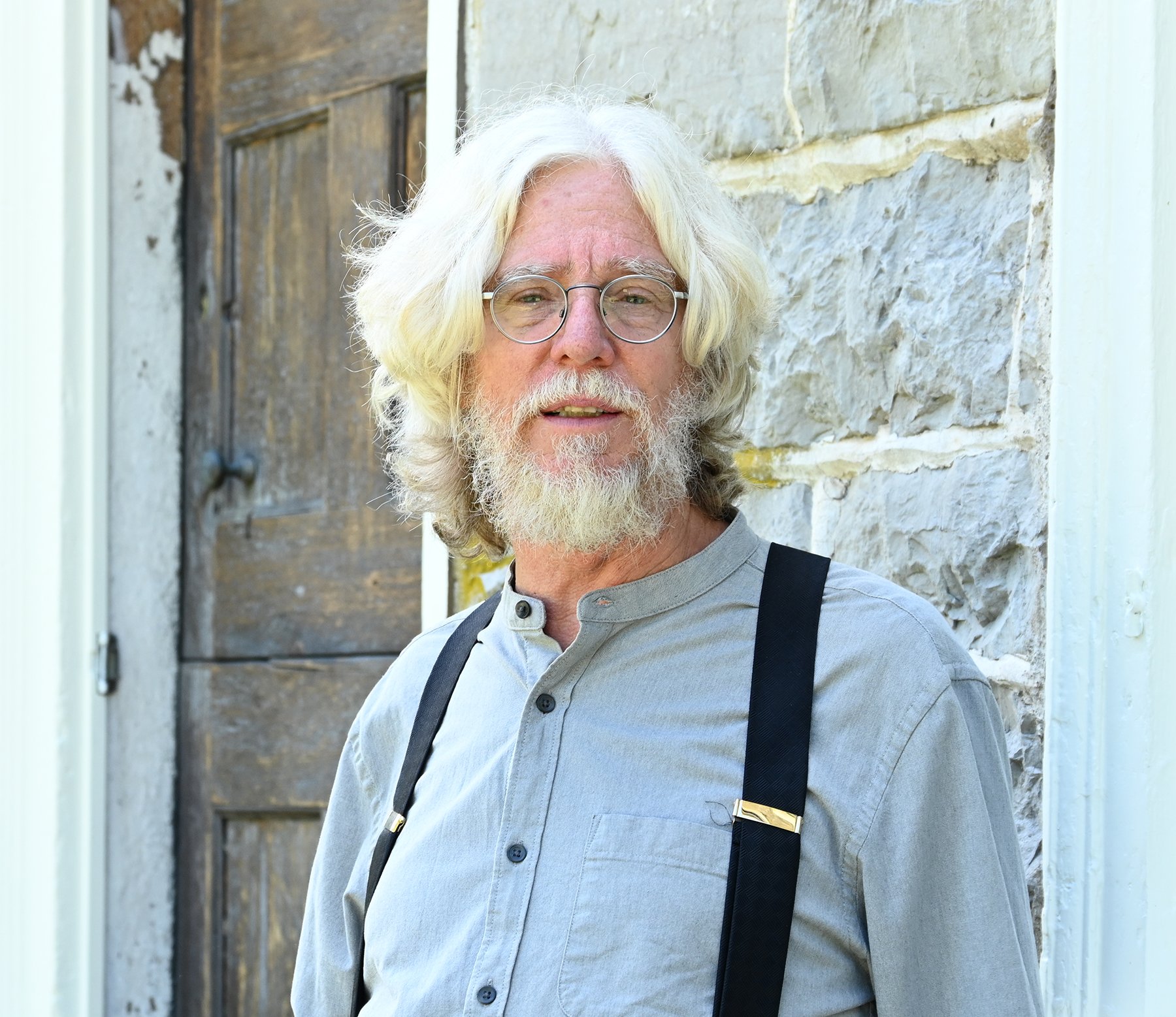D&H Canal Lock Stone in High Falls
All of the locks on the National Historic Landmark Five Locks Walk the D&H Canal Historical Society maintains and interprets in High Falls, NY are missing some of the topmost layers of stone. These locks are fairly unique for the D&H Canal, having been made of fitted dry-laid stone rather than the usual composite construction used for most of the 108 locks. (Composite construction locks are made of unfitted field stone with a 2” white oak lining applied to the interior to make it water-tight.) The closer to a means of transportation the locks are, the more stone is missing. It appears that people re-purposed the cut stones once the locks were no longer in service. Or so I thought, but then I read an old newspaper account.
Reclaimed D&H lock stone at the Marbletown transfer station, to be used in Grady Park and the Five Locks Walk.
Historian Dorothy Sanderson worked at the Ellenville Library in the mid-twentieth century and extensively researched newspaper archives from the 19th century for stories about the Canal. The work resulted in one of the best secondary source histories of the D&H Canal, her The Delaware & Hudson Canalway. The much expanded hardcover second edition was published in 1974. A collection of her research notes on the D&H Canal wound up at the Wallenpaupack Historical Society, resulting in that institution’s 2013 publication, The Raging Canal- Newspaper Accounts of the Delaware and Hudson Canal, 1870-1902. (Water from Lake Wallenpaupack fed the D&H Canal in Pennsylvania, but the Canal itself passed a mile or two to the west.) This compilation is an excellent primary source of stories about the D&H Canal, since it consists entirely of period newspaper accounts. This was in the pre-internet era, so Ms. Sanderson viewed them on microfilm. I marvel at her hard work and diligence- these two sources contain an astounding number of press accounts.
In 19th century newspapers, regional papers often printed items from other newspapers, in the earliest days of news syndication. According to The Raging Canal, on December 18, 1873, the Wayne County Herald reprinted the following story-
“A WORK THAT WAS NEVER FINISHED
Any one who has been at High Falls on the Del & Hud [sic] Canal, says the Middletown Mercury, may have noticed lying there in [sic] an immense quantity of splendid building stone, much of it dressed and ready for use, but apparently lying valueless. About 50 men found employment for several years in getting out and dressing these stones. The work was commenced by the Canal Co. under the superintendency of the late R. F. Lord, Esq., the stone being intended for the masonry in doubling several of the locks in the canal, it being necessary to increase its capacity. The work was still continued when Coe. F. Young assumed control. Shortly after Thomas Dickson was elected President, he and Mr. Young were making an inspection tour of the canal. Asher M. Atkinson, now General Superintendent of the canal, was then a Division Superintendent. Accompanying the above officers to High Falls, he learned for the first time-that point being out of his jurisdiction-that certain locks were to be made double. He demonstrated to the satisfaction of both Mr. Young and Mr. Dickson, that the locks then arranged were capable of passing 2,000,000 tons of coal annually, and the proposed enlargement of the locks was to be made to admit the transportation of 1,500,000. The work was immediately discontinued, and over $100,000 saved to the company.”
(My thanks to Sally Talaga and the Wayne County Historical Society in Honesdale, PA, for the image of the article.)
It happens that the D&H Canal Company peak year for coal production was in 1870, when it produced over 2,000,000 tons, but by that time the Company owned or controlled rail lines from NYC to Montreal, so the Canal carried less than that- the amount of D&H coal shipped on the Canal peaked in 1872 at 1,409,628 tons. R. F. Lord died in 1867 and had stepped down as chief engineer in 1862, so the work of roughing out that stone spanned many years.
A D&H Canal lock stone at the Rest Plaus Rail Trail parking lot.
I have seen a lot of dressed lock stone around the area, most notably by the High Falls train station and in the masonry of the NYO&W trestle in Stone Ridge (on the Rail Trail between Leggett and Cottekill Roads). Some can be found where it has recently been relocated in the Rail Trail’s Rest Plaus Road parking area, and more will probably be used in the new Grady Park- this stone had been previously repurposed, used to buttress the walls to the loading area at the Transfer Station. I always assumed these stones were removed from the local locks, as most are missing at least some stone and at least one is missing a whole side, but since discovering this account, it is clear there was a significant quantity of dressed local Shawangunk conglomerate stone available in the area in 1873, long before the Canal ceased holding water, which was in 1901 in High Falls. (The Canal was still in operation from the Rosendale section of High Falls to Rondout through 1917, carrying in coal from the Hudson River for the cement kilns still in operation and shipping Rosendale cement out.) The Canal Company undoubtedly sold off this valuable commodity when they were convinced they no longer needed it, despite this account saying it was “...apparently lying valueless.”
Pictured to the left is stone used for a viaduct in 1901 for the NYO&W Rail Road- could it be from the D&H Canal?
In 2020, the D&H Canal Society was awarded a grant from the Institute for Museum and Library Studies in conjunction with the Museum Association of New York to further train staff on the use of digital media. The second project for this 2 year grant requires partnering with a Library. We decided that this story would be perfect for that collaboration and have partnered with Sandy Marsh, Digital Archivist at the Ellenville Public Library & Museum and Nicole Sorbara, Museum Manager of the Terwilliger House, the Museum adjacent to the Ellenville Library. Look for the finished video on D&H TV later this year!
Bill Merchant
Bill Merchant, Deputy Director for Collections, Historian & Curator for the D&H Canal Historical Society.





